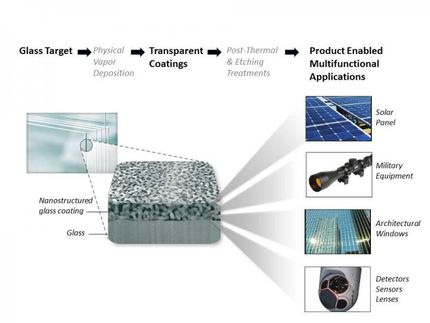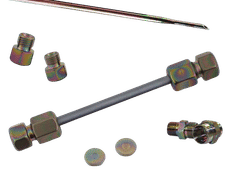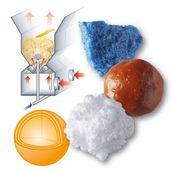Short Laser Pulses for Material Deposition with Cold Spray Technology
Advertisement
In a new EU-funded project, ultra-short laser pulses modify material surfaces so that metal powder from a cold gas jet can adhere more easily. With Cold Spray Technology, coating lightweight materials such as plastics or carbon fiber reinforced plastic (CFRP) becomes significantly simpler. The EU research project “Efficient Manufacturing of Laser-Assisted Cold-Sprayed Components” (EMLACS) unites five partners from industry and research who want to extend low-pressure cold gas spraying to new applications.
Cold Gas Spraying is an additive manufacturing process in which metal powders are accelerated to supersonic speeds to adhere to material surfaces. The material deposition process is based on the kinetic energy of the particles. A thick layer (>0.5 mm) is deposited with no thermal defect in the substrate. The deposited layer can be directly machined or reworked. The main advantages of low-pressure cold gas spraying are the lack of heat input, high processing speed, and low investment cost. New material combinations are especially promising in automotive and aeronautics.
The main challenge in this technology is the adherence of the first layer on the workpiece. The aim of the EU research project “Efficient Manufacturing of Laser-Assisted Cold-Sprayed Components” (EMLACS) will improve adhesion on different substrates by using high-speed laser surface structuring with integrated ns and ps lasers with low-pressure cold gas spraying. New material combinations can then be developed for industrial use. The deposition of metallic materials (Cu or Al) on carbon fiber and glass fiber reinforced plastic (CFRP and GFRP) substrates is being investigated, which has already created significant interest in the aeronautic and automotive industries. In addition, the new technology can be applied in novel ways in electronics manufacturing. As an example, Cold Gas Spraying may deposit a copper layer on a non-conducting housing for fanless heat removal from electronic components.
Other news from the department science
These products might interest you

Get the chemical industry in your inbox
By submitting this form you agree that LUMITOS AG will send you the newsletter(s) selected above by email. Your data will not be passed on to third parties. Your data will be stored and processed in accordance with our data protection regulations. LUMITOS may contact you by email for the purpose of advertising or market and opinion surveys. You can revoke your consent at any time without giving reasons to LUMITOS AG, Ernst-Augustin-Str. 2, 12489 Berlin, Germany or by e-mail at revoke@lumitos.com with effect for the future. In addition, each email contains a link to unsubscribe from the corresponding newsletter.































































